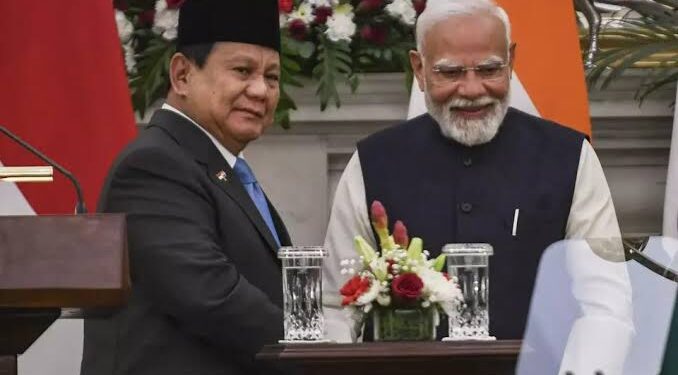India and Indonesia have officially agreed to ditch the US dollar for cross-border trade. The two BRICS nations will now conduct transactions using their national currencies. This move strengthens BRICS’ ongoing push for de-dollarization.
Prime Minister Narendra Modi and Indonesian President Prabowo Subianto met in New Delhi over the weekend. They released a joint statement confirming their commitment to using local currencies. The Indian rupee and the Indonesian rupiah will now be the primary mediums for trade between the two countries.
BRICS Expands De-Dollarization Efforts
Indonesia officially joined BRICS in January 2025. Within weeks, it aligned with the group’s goal of reducing reliance on the US dollar. The decision to use local currencies aligns with BRICS’ broader strategy of financial independence.
China, Russia, and Brazil have already taken steps to move away from the dollar. Now, with India and Indonesia adopting similar policies, the trend is accelerating. The de-dollarization push aims to strengthen domestic economies and reduce exposure to US monetary policies.
US Faces Economic Challenges as BRICS Shifts Away from Dollar
Former President Donald Trump has expressed concerns about BRICS’ de-dollarization efforts. He previously warned of imposing 100% tariffs on goods entering the US. However, this has not deterred India and Indonesia from pursuing their trade policies.
If more BRICS nations follow suit, the US dollar’s dominance in global trade could weaken. This shift could impact American industries that rely on exports and international transactions in dollars.
India and Indonesia Strengthen Economic Ties
By settling trade in local currencies, India and Indonesia are deepening financial ties. Both nations believe this will boost economic stability and promote trade growth.
Their joint statement highlighted confidence in this new approach. The leaders emphasized the importance of swift implementation to maximize benefits. They believe this step will enhance bilateral trade and reduce dependence on foreign currencies.
Global Impact of BRICS’ De-Dollarization Move
The growing influence of BRICS is reshaping global trade. The bloc is actively working to reduce the dollar’s dominance in energy and commodity markets. Russia and China have already shifted to local currencies for oil and gas transactions.
If other BRICS nations adopt similar policies, the US dollar’s role in international trade could diminish. This could lead to a reconfiguration of the global financial system.
Future of BRICS’ Economic Strategy
BRICS’ de-dollarization agenda continues to gain momentum. Saudi Arabia is also considering joining the bloc, which could further challenge the dollar’s supremacy.
India and Indonesia’s latest decision is a significant step in this direction. Their move signals confidence in BRICS’ financial strategies and reinforces their commitment to economic independence.
If the trend continues, the US could face long-term financial consequences. The dominance of the dollar is being tested, and BRICS nations are leading the charge.
Related Stories:
BRICS+ and G20: Competing or Collaborating for the Global South?
Nigeria Officially Joins BRICS to Boost Trade & Economic Ties
BRICS Aims To ‘build’ Stronger Global Ties as Trump Takes Office: Brazil
















